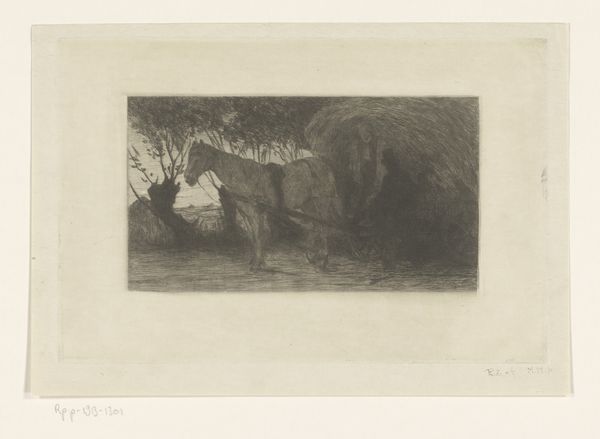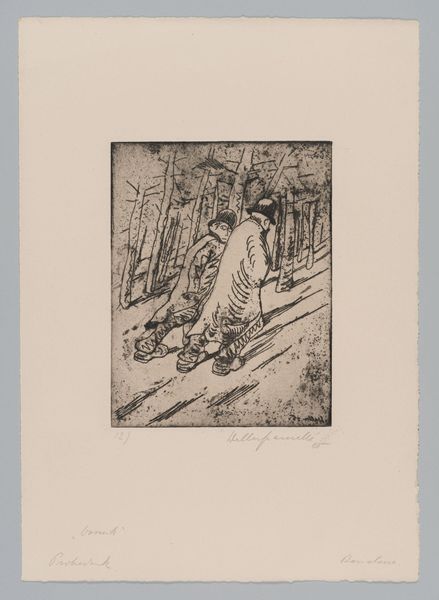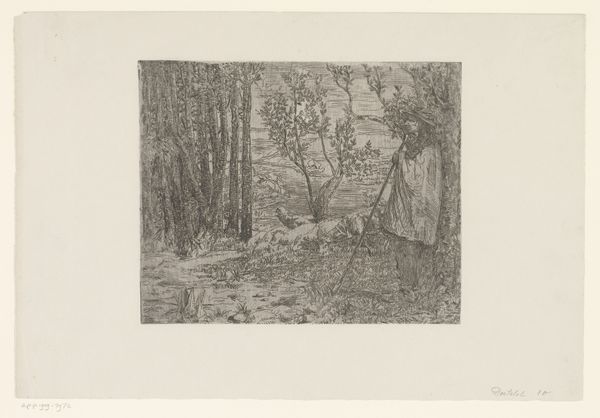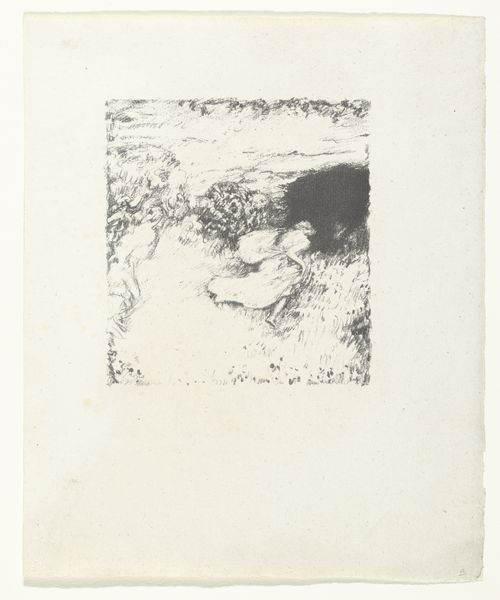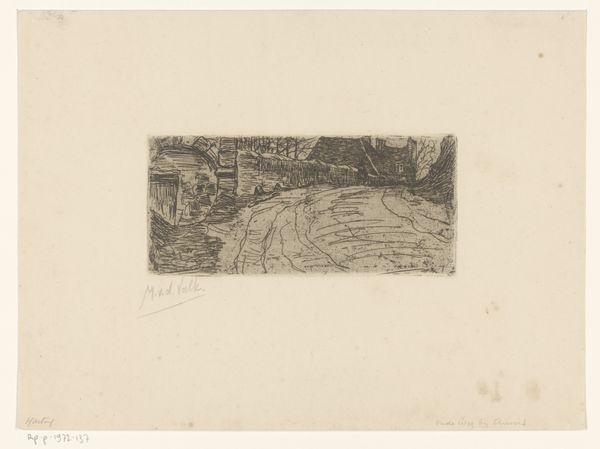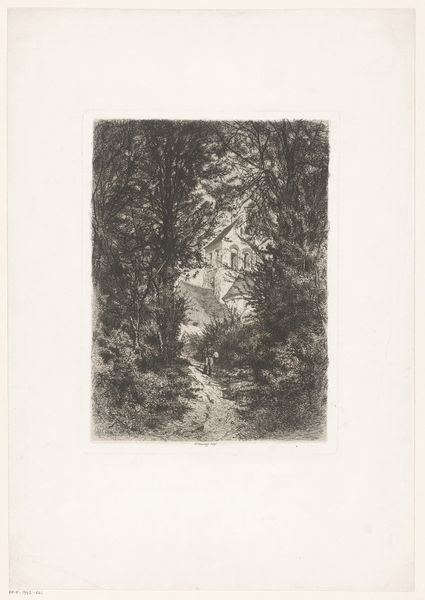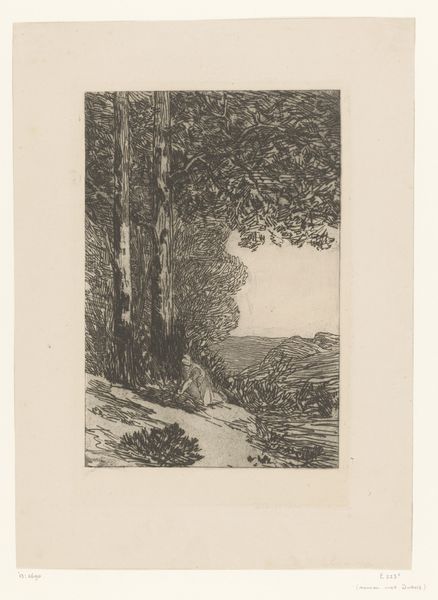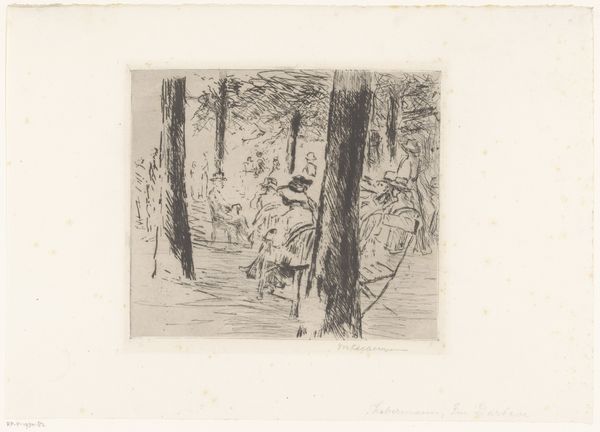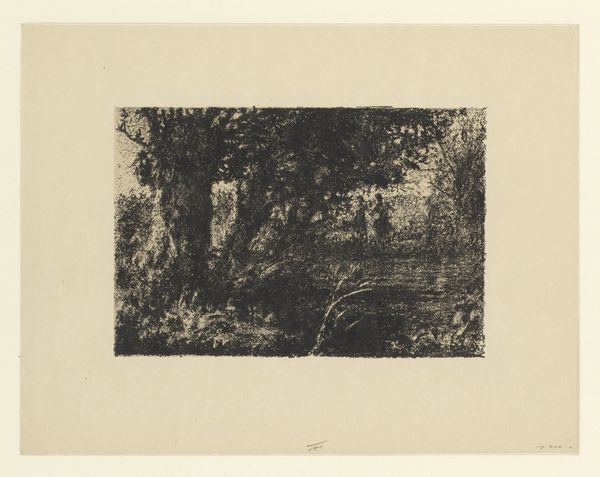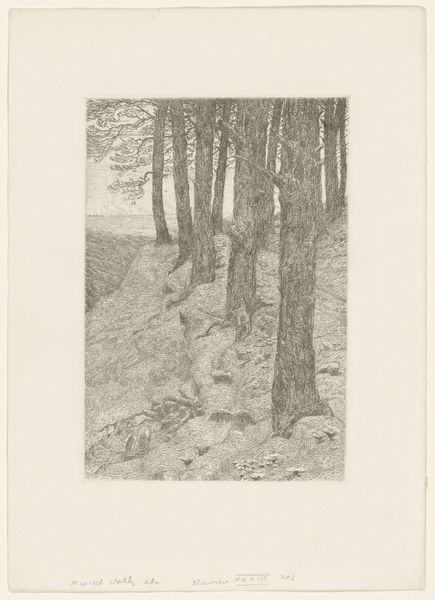
Dimensions: height 137 mm, width 223 mm, height 281 mm, width 380 mm
Copyright: Rijks Museum: Open Domain
Editor: This is "Heilige Agnes zit op rots in landschap" or "Saint Agnes Sitting on a Rock in a Landscape" by Jean Danguy, created sometime between 1895 and 1897. It's an etching and print on paper. The drawing is delicate, creating a feeling of introspection. What stands out to you in terms of composition and form? Curator: What strikes me is the strategic interplay between the textures achieved through the etching technique. Notice how the density of lines shifts. Near the figure, the marked concentration of dark, almost frenetic, lines provides a palpable contrast with the smooth expanse that is the open field, and thus highlights the human element within the landscape. How does that contrast strike you? Editor: It gives her a central visual importance despite her relatively small scale within the entire composition. It’s as though her inner state is being reflected by the agitated marks surrounding her. Do you think the artist's choices in line quality contributes to a specific reading? Curator: Indubitably. Consider the very conscious variation in line weight; heavier lines delineate the figure’s immediate surroundings while the distance melts away into softer, more diffused marks. The horizon line, barely articulated, becomes secondary. In this manner, the artist directs our visual attention toward the figure's emotional sphere. Editor: It almost creates a flattening effect, where foreground and background compete for dominance on the picture plane. It challenges our traditional ideas of perspective and depth. Curator: Precisely. Danguy subtly employs disjunctive space, which complicates the relationship between foreground and background elements and ultimately pushes the viewer to decipher the expressive intention underlying the artist's decisions. Editor: I hadn’t considered the spatial tension that the disjunctive space creates. I see now how the artwork is less about representing reality and more about expressing a mood through the relationship between the figure and the landscape. Curator: Indeed, by eschewing traditional linear perspective and imbuing line with emotional resonance, Danguy transcends representational constraints and guides us to engage with the piece on a formal level.
Comments
No comments
Be the first to comment and join the conversation on the ultimate creative platform.
